Cilento National Park’s most interesting villages
Roscigno Vecchio
Roscigno Vecchia (Old Roscigno, also named Roscigno Vecchio) is an example of a 19th century rural town developed around a central square and a church unmodified by modern architectural or infrastructural changes.
It has been completely abandoned since the early 20th century, when the population moved to Roscigno Nuovo due to a landslide. Now open for tourism, the ghost town was declared an eco museum [1] in the early 21st century. Nearby, and also in the province of Salerno, there is another example of ghost town: the old village of Romagnano al Monte.
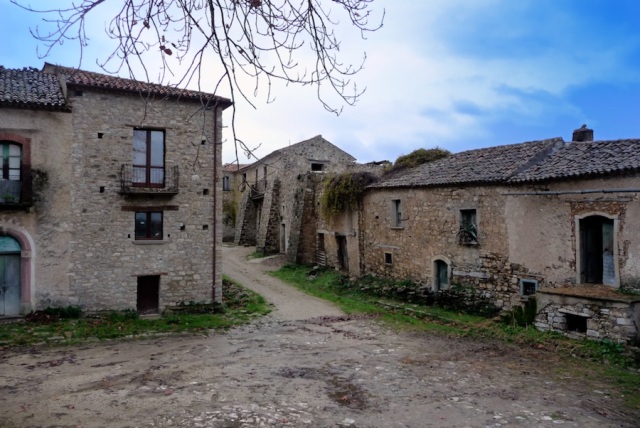 |
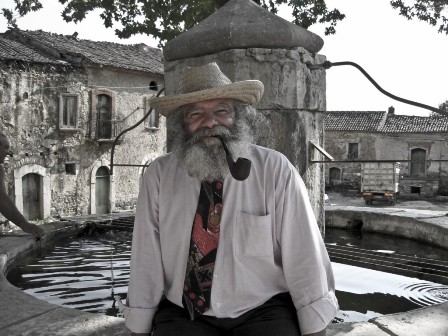 |
 |
Castellabate
The area was inhabited since Upper Palaeolithic times. In early medieval times, the current frazione of Licosa was a base of the Saracens, who were defeated here in 846 by a coalition of the Duchy of Naples, Amalfi, Sorrento and Gaeta.
The history of the current Castellabate is tied to Saint Costabile Gentilcore (St.Constabilis), fourth abbot of La Trinità della Cava. In 1123, the same year in which he was elevated to the position of abbot, he started construction on the Angel’s Castle (10 October 1123), which afterwards became entitled to him. His title gave the village its present name: Castrum Abbatis, Latin for “the castle of the abbot”. His abbacy lasted until 17 February 1124. His successor, Simeon, completed its construction and helped the inhabitants.
Later, Castellabate fell under the control of the barony of the Cilento. It then passed, in turn, to Caracciolo, Loffredo, Filomarino, Acquaviva, and finally the Granito family (who carried the title of marquis and later became princes by marriage) in 1745. Castellabate remained in the family of the Prince of Belmonte until the end of the feudal era..
 |
 |
 |
Santa Maria di Castellabate
The town was known in the 18th century as “Isca delle Chitarre”, its original area and now the old town. The downtown is extended by two squares, Piazza Matarazzo and Piazza Lucia and the oldest houses are located in front of the little harbour in a place named “Porte le Gatte”.Santa Maria lies in the central-northern side of the Cilento, alongside the Tyrrhenian Sea, and is extended from the zone of Lago, to the beach of Pozzillo. The town is only 3 km away from the old town of Castellabate, 12 from Agropoli, 20 from Acciaroli and 60 from Salerno. The town has a little harbour, the greatest port in the ”comune” is at the nearer hamlet of San Marco.
The town is a part of “Cilento and Vallo di Diano National Park”, its natural environment is composed of “Maquis”, which is typical of mediterranean countries. It attracts a lot of tourism, especially in summer, because of good road links to Agropoli, Salerno and Naples and because of the quality of its water; which give it the Blue Flag beach award every year from 2003.Benvenuti al Sud,an Italian adaptation of the 2008 French film Bienvenue chez les Ch’tis, has been set in Castellabate and partly in Santa Maria and San Marco.
 |
 |
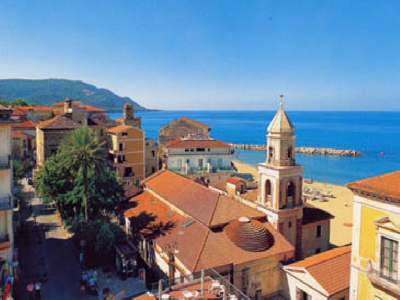 |
Padula and the Charterhouse
Padula Charterhouse, in Italian Certosa di Padula (or Certosa di San Lorenzo di Padula), is a large Carthusian monastery, or charterhouse, located in the town of Padula, in the Cilento National Park (near Salerno) in Southern Italy. It is a World Heritage site.
The monastery is the second largest charterhouse in Italy after the one in Parma. Its building history covers 450 years, but the principal parts of the buildings are in Baroque style. It is a very large monastery, comprising 51,500 m² (12.7 acres), with 320 rooms and halls.
Padula Charterhouse was founded by Tommaso di San Severino on 27 April 1306 on the site of an earlier monastery. It is dedicated to Saint Lawrence, and its architectural structure supposedly recalls the griddle-iron upon which the saint was burnt alive.
The monastery has the biggest cloister in the world, covering 12,000 m² (2.97 acres) and surrounded by 84 columns. A famous spiral staircase of white marble inside an annex leads to the large library.
According to the strict Carthusian distinction between contemplation and work, there are two distinct places for these practices: on the one hand the peaceful cloisters, the library with its fine Vietri ceramic tiled floor, the chapels decorated with fine inlaid marble works. The altar frontals in most of the chapels are inlaid, not with marble, but with some of the most spectacular 18th. century scagliola work ever created in the 18th. Century.This is the highest concentration of such work in one place. One of the centres of production was in Naples. the cloister orchards; and on the other hand the large kitchen, the cellars with their enormous wine vats, the laundries, and the huge external yards, where there were people working in the stables, ovens, stores, and at the olive oil mill. The yards were used for productive activities and for trade between the charterhouse and the external world.
The monastery also houses the archaeological museum of Western Lucania, which preserves a collection of all the finds unearthed in the excavations at the necropolis of Sala Consilina and Padula. This museum represents a period of time ranging from protohistory to the Hellenistic Age.
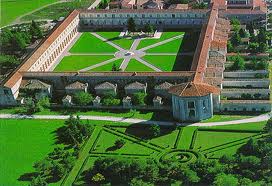 |
 |
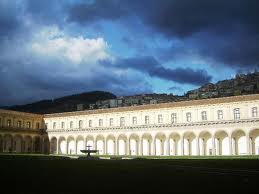 |
Pertosa Caves
The caves,also named Grotte dell’Angelo as many italian voids in honour of St. Michael, are extended also in the territories of Auletta and Polla.
They are situated by the eastern side of Alburni mountains, in the locality of Muraglione, 3 km (1.9 mi) in south of Pertosa and close to its railway station. Due to the presence of Tanagro river the caves are rich of water and, after the main entrance, there is an underground lake.
The caves were the set of some scenes of 1998 Italian horror film “The Phantom of the Opera”,directed by Dario Argento.
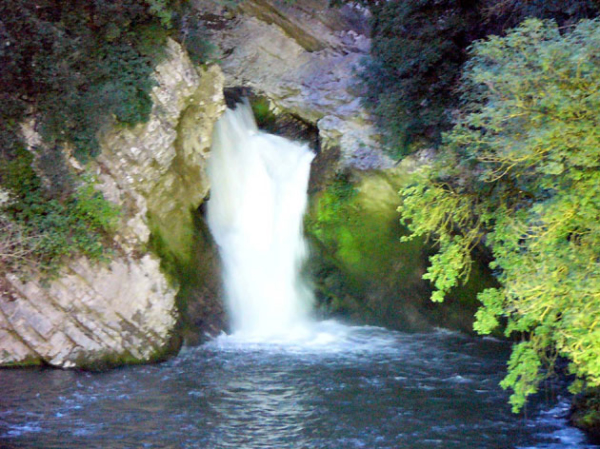 |
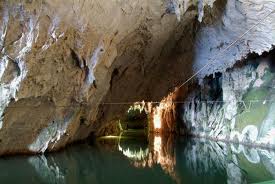 |
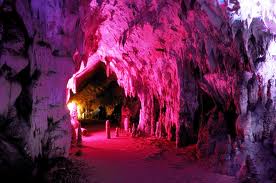 |
Velia
Velia is the Italian (and Latin) name of the ancient town of Elea located on the territory of the comune of Ascea, Salerno, Campania,
Italy in a geographical sub-area named Cilento. Originally founded by the Greeks as Hyele in Magna Graecia around 538–535 BC, it is best known
as the home of the philosophers Parmenides and Zeno of Elea, as well as the Eleatic school of which they were a part. The site of the Acropolis of ancient Elea,
once a promontory (castello a mare, meaning “castle on the sea”) and now inland, was renamed in the Middle Ages Castellammare della Bruca.According to Herodotus, in 545 BC Ionian Greeks fled Phocaea, in modern Turkey, which was being besieged by the Persians. After some wanderings (8 to 10 years) at sea, they stopped in Reggio Calabria, where they were probably joined by Xenophanes, who was at the time at Messina, and then moved north along the coast and founded the town of Hyele, later renamed Ele and then, eventually, Elea. The location is nearly at the same latitude as Phocaea.
Elea was not conquered by the Lucanians, but eventually joined Rome in 273 BC and was included in ancient Lucania.Remains of the city walls, with traces of one gate and several towers, of a total length of over three miles, still exist, and belong to three different periods, in all of which the crystalline limestone of the locality is used. Bricks were also employed in later times; their form is peculiar to this place, each having two rectangular channels on one side, and being about 1.5 in. square, with a thickness of nearly 4 in. They all bear Greek brick-stamps. There are some remains of cisterns on the site, and, various other traces of buildings.
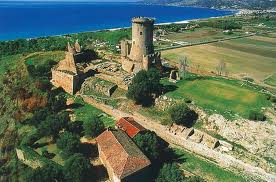 |
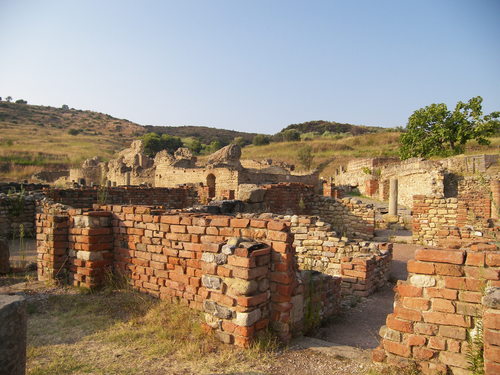 |
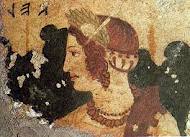 |
